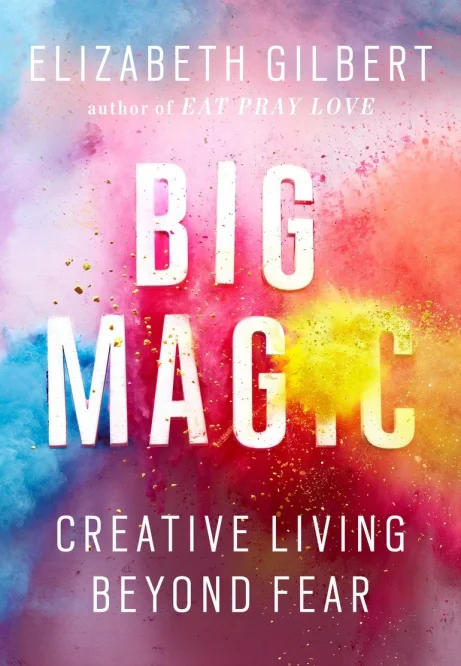
The universe buries strange jewels deep within us all, and then stands back to see if we can find them. The hunt to discover those jewels—that’s creative living. The courage to go on that hunt in the first place—that’s what separates a mundane existence from a more enchanted one. The often surprising results of that hunt—that’s what I call Big Magic. And Big Magic is not just my choice of a subject for this book; it’s my choice of a life.
Short Summary:
“Big Magic: Creative Living Beyond Fear” is Elizabeth Gilbert’s manifesto on creativity, published in 2015. Unlike traditional how-to guides, this book explores the mysterious, often spiritual relationship between humans and creativity, drawing from Gilbert’s own experiences as a writer and from stories she’s collected from other artists.
Gilbert begins by introducing her central premise: creativity is a force of enchantment – the “Big Magic” – that seeks human collaboration. She positions creative ideas as disembodied energetic life-forms that literally circle the planet searching for available and willing human partners. When an idea finds someone receptive, magic happens; when ignored, the idea eventually moves on to someone else.
The book is structured around six essential attitudes toward creativity: Courage, Enchantment, Permission, Persistence, Trust, and Divinity. In “Courage,” Gilbert addresses the universal fears that block creative expression – fear of failure, ridicule, inadequacy – and proposes that fear should be acknowledged but never allowed to drive. She advises creatives to speak to their fears as one might address a child in the backseat: “You’re allowed to be here, but you don’t get to choose the destination.”
In “Enchantment,” Gilbert shares anecdotes illustrating how ideas seem to have wills of their own. Her most compelling story involves a novel concept that “traveled” between her and novelist Ann Patchett when Gilbert abandoned the project. Years later, she discovered Patchett writing a remarkably similar story, suggesting the idea had found a new host.
“Permission” urges readers to create without seeking external validation or expecting art to support them financially. Gilbert demolishes the myth of the tortured artist, arguing that creativity thrives best through curiosity and pleasure, not suffering. She reveals her decision to never burden her writing with being her primary income source – “I never wanted to strain my writing with the responsibility of paying for my life” – even after the massive success of “Eat Pray Love.”
“Persistence” encourages a disciplined approach despite inevitable setbacks, while “Trust” promotes faith in the creative process, emphasizing that perfectionism is just fear disguised as a virtue. The final section, “Divinity,” celebrates the transcendent, magical moments when creativity flows through us.
Throughout, Gilbert weaves memorable mantras: “Done is better than good” and “Perfectionism is a high-end, haute couture version of fear” among them. She consistently undermines the notion that creativity requires suffering or that inspiration strikes only special people, instead proposing that creativity is our birthright and can be accessed through curiosity-driven living.
The book concludes with Gilbert’s definition of creative living as “a life driven more strongly by curiosity than by fear.” She doesn’t promise fame or success but something potentially more valuable: the joy of making things and the courage to live an amplified existence.
What makes “Big Magic” distinctive is Gilbert’s blend of practical advice and mystical thinking. She presents creativity as both a concrete practice requiring discipline and an ethereal force with its own consciousness – a paradox she embraces wholeheartedly as the essence of Big Magic itself.